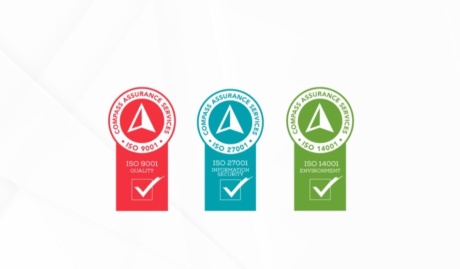I recently threw a question out to a group of my professional peers, asking them what they saw as the benefits of aligning IT strategy with business strategy.
The responses I received were nothing short of exceptional. It reinforced for me (yet again) what an insightful, intelligent and progressive professional community I have the good fortune to be part of.
Respondents represented a diverse range of positions including CEOs, founders, self-employed and employees, with an equally diverse range of industries represented, including IT, retail, professional services, medical and creative industries.
Even though everyone brought their own unique perspective to the discussion it was interesting to see that responses could be classed easily within three main categories.
Related: Three Crucial Elements for your IT Strategy
Using Information Technology helps businesses remain competitive
A long time ago in a galaxy far, far away, computers were an indulgent option when running a business. Computers were expensive, had limited functionality and, to many, provided limited value beyond what traditional methods had done. Despite this, the march towards a technology-enabled future proceeded, lead by finance departments looking for efficiencies promised by so called ‘spreadsheet’ software.
Fast forward to today and you would be hard pressed to find a business not dependent on IT in some way or another. These days IT is a given in pretty much every element of business, from finance to marketing, production, design, customer service and all points in between.
Given this universal adoption, simply ‘using’ IT these days is no longer enough to gain advantage, but is now mere table stakes to stay in the game. So does that mean that technology no longer has any competitive advantage to offer? Quite the contrary. However to gain that advantage IT can no longer be considered an operational issue, but must be given a seat at the board table and aligned strongly with the overall business strategy.
In the not too distant past, being in ‘the cloud’ was a buzz word, but now a significant amount of technology used in businesses is cloud based.
Looking forward, businesses of all sizes and industries seem to be shifting their focus to data. Using business data to make informed decisions is actually quite a recent phenomenon. Where managers once relied upon ‘gut feel’ to chart their course, there are now extensive opportunities to gather, store, organise and utilise information from all sorts of sources to improve organisational agility and effectiveness.
So, essentially, there’s no competitive advantage in merely ‘using’ technology these days, but in using it strategically in alignment with the overall business goals.
Aligning IT and business goals helps focus the organisation on business objectives
Another benefit of aligning IT strategies with business goals is to focus the stakeholders on the objectives of the business. Then the IT systems can be used effectively to carry out those business goals.
It sounds simple enough, but first you need to be clear on what the business strategy is and clearly communicate this strategy with the people in your organisation, including your IT department, so they understand the core business goals and can work towards them. It’s often assumed that an organisation already has, and actively executes a strategic plan, but unfortunately this isn’t always the case.
Aligning IT strategy with business goals helps guide and inform decision making, and ensures that everyone is working towards the same goals and are on the same page. IT systems that are selected and implemented in line with an organisation’s strategic plan are more likely to be valuable, well used tools. A team is more likely to be on board with implementation and training on the new technology if they understand how the IT systems fit in with the business goals.
Focusing IT efforts towards meeting data-driven business objectives will ensure that the whole business believes in the value of IT in achieving the underlying strategic course of the organisation. These days, there are more and more tools available to help harness the power of data from multiple sources into making informed decisions about the direction of the business.
In the Facebook age and with the advent of increased scrutiny from government and regulatory bodies, businesses of all sizes need to be more conscious of the way that they manage and secure sensitive information. Whilst there is some fantastic technology to assist businesses to manage their security, the reality is that alignment of business processes and competently trained staff operating in a culture of awareness is essential in realising the objective of running a secure business.
Ultimately, it’s very much a two way street. Not only is it about your IT being responsive and understanding the needs of your business, but aligning your IT and business objectives also means that you are ensuring that the way in which risks and opportunities around technology are better managed in the business.
Maximise value from limited resources for long term success
Especially in smaller organisations, resources will always be limited, so aligning IT with business strategy means that resources are being used most effectively.
Using the technology that aligns with business goals means that efficiencies can be achieved, which in turn keeps costs to a minimum.
Sometimes with technology, it’s easy to get swept up in the latest shiny gadgets and trends. And while it might be fun to own the latest iPhone, it may not be a necessary tool for stakeholders to achieve their goals. There will also be areas where you may not want to invest in new technologies because it would be undesirable due to high risks, costs or even fragmentation of your data or systems.
If the IT goals are aligned with the business goals, it allows the business to be proactive and intentional with the IT spend and therefore reduce unnecessary costs that come from being at the whim of trends.
There are many benefits to aligning your business’ IT strategy with its business goals, but they can largely be categorised into three areas. In order to remain competitive, to ensure that all stakeholders are working towards the same goals, and to maximise the value from limited resources, it’s worthwhile for business and IT strategies to be aligned. Technology for the sake of technology is of no benefit to anyone, however that doesn’t mean IT should limit its role to processing work orders and printing labels. If IT is providing technology leadership and aligning with the goals of the organisation, that is where the true power of IT will be found in the business.

























